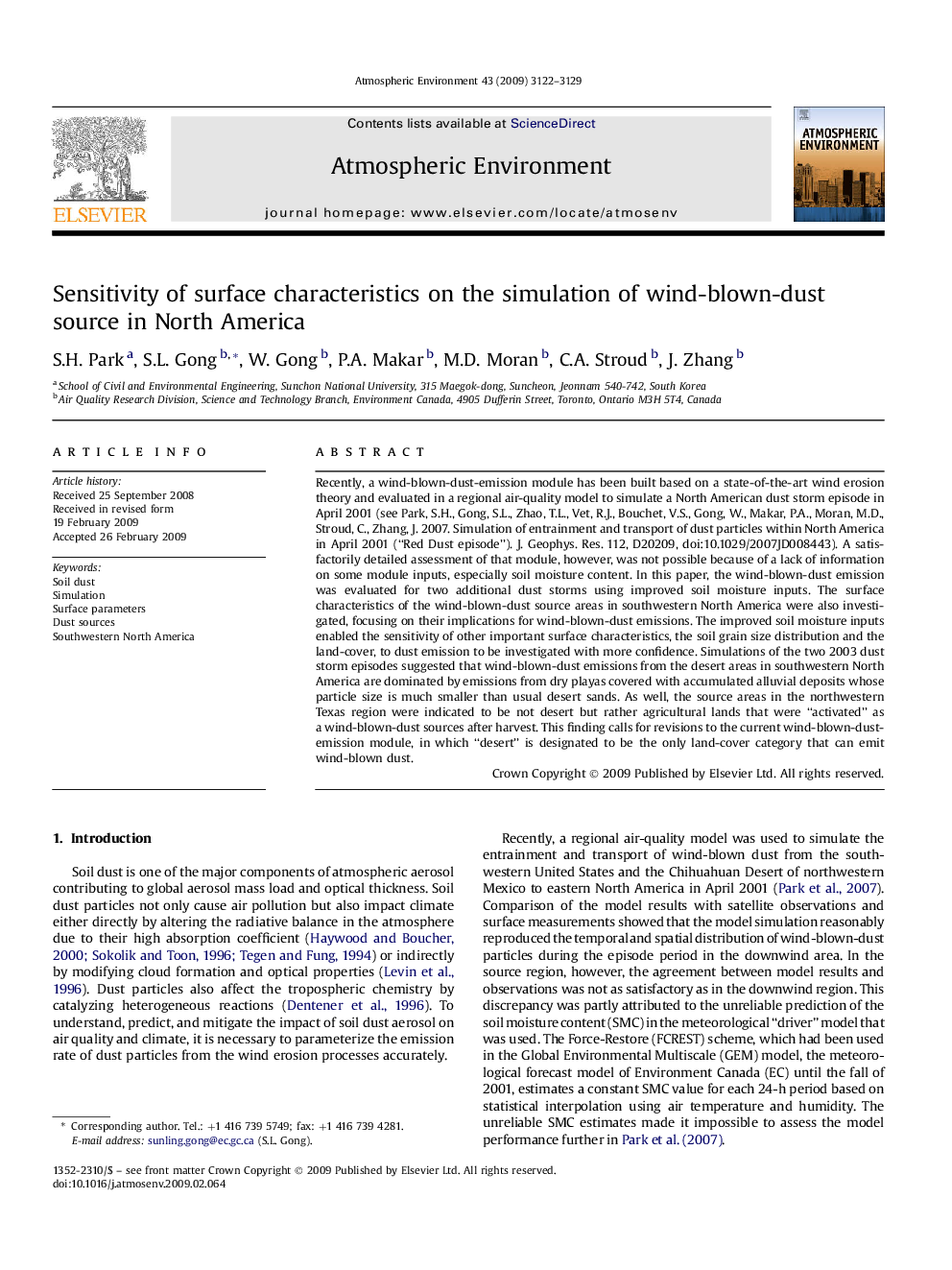| Article ID | Journal | Published Year | Pages | File Type |
|---|---|---|---|---|
| 4441819 | Atmospheric Environment | 2009 | 8 Pages |
Recently, a wind-blown-dust-emission module has been built based on a state-of-the-art wind erosion theory and evaluated in a regional air-quality model to simulate a North American dust storm episode in April 2001 (see Park, S.H., Gong, S.L., Zhao, T.L., Vet, R.J., Bouchet, V.S., Gong, W., Makar, P.A., Moran, M.D., Stroud, C., Zhang, J. 2007. Simulation of entrainment and transport of dust particles within North America in April 2001 (“Red Dust episode”). J. Geophys. Res. 112, D20209, doi:10.1029/2007JD008443). A satisfactorily detailed assessment of that module, however, was not possible because of a lack of information on some module inputs, especially soil moisture content. In this paper, the wind-blown-dust emission was evaluated for two additional dust storms using improved soil moisture inputs. The surface characteristics of the wind-blown-dust source areas in southwestern North America were also investigated, focusing on their implications for wind-blown-dust emissions. The improved soil moisture inputs enabled the sensitivity of other important surface characteristics, the soil grain size distribution and the land-cover, to dust emission to be investigated with more confidence. Simulations of the two 2003 dust storm episodes suggested that wind-blown-dust emissions from the desert areas in southwestern North America are dominated by emissions from dry playas covered with accumulated alluvial deposits whose particle size is much smaller than usual desert sands. As well, the source areas in the northwestern Texas region were indicated to be not desert but rather agricultural lands that were “activated” as a wind-blown-dust sources after harvest. This finding calls for revisions to the current wind-blown-dust-emission module, in which “desert” is designated to be the only land-cover category that can emit wind-blown dust.
